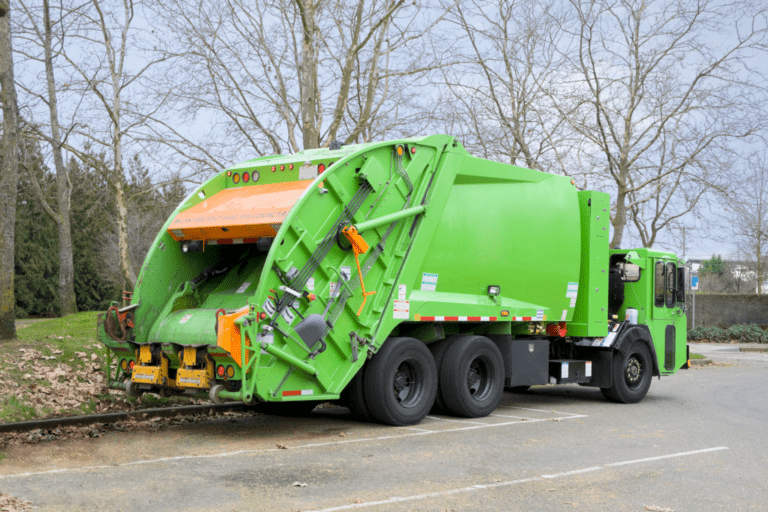On July 6, 2023, the National Highway Traffic Safety Administration (NHTSA) and the Federal Motor Carrier Safety Administration (FMCSA) published a joint Notice of Proposed Rulemaking (NRPM) seeking comments on a proposal to require that all heavy trucks be equipped with Electronic Stability Control (ESC) and Automatic Emergency Braking (AEB) systems.
This could have a significant impact on motor carriers. Let’s unpack the proposal, shall we?
Why are these new rules being proposed?
NHTSA estimates that approximately 60,000 crashes annually involve a heavy truck (defined as a class 3-8 commercial motor vehicle weighing over 10,000 pounds) that collides with the rear end of a slower-moving or unmoving vehicle.
That makes up approximately 11 percent of all annual large truck crashes — no small chunk. These rear-end crashes result in roughly 388 fatalities, accounting for more than seven percent of all fatal large truck accidents.
This stat caught the attention of the NHTSA, which granted a petition in 2015 for rulemaking from the Truck Safety Coalition, the Center for Auto Safety, Advocates for Highway and Auto, and Safety and Road Safe America, requesting the establishment of a safety standard to require Advanced Emergency Braking Systems (AEBs) on certain heavy vehicles.
Unfortunately, subsequent years saw little progress. Frustrated with the sluggish response, Congress added a provision to the 2021 Bipartisan Infrastructure Law (see section 23010) requiring that NHTSA complete the promised rulemaking.
Now, under the watchful eye of Congress, NHTSA and FMCSA are working diligently to finalize the rulemaking.
What exactly are NHTSA and FMCSA proposing?
The goal is to require that AEBs are installed, implemented and maintained on all new heavy trucks. Because existing AEB systems on heavy vehicles are built upon electronic stability control systems and are currently only required on most heavy trucks with a gross vehicle weight rating (GVWR) of 26,000 pounds or more, NHTSA is also proposing to update the ESC vehicle standard to require it on all heavy trucks with a GVWR of more than 10,000 pounds.
To prevent and/or mitigate rear-end crashes, the proposed rules would require the AEB systems to:
- Apply service brakes
- Apply additional braking force if already being applied by the operator
- Be self-monitoring and include a malfunction indicator that notifies drivers when systems are not working properly and/or repairs may be necessary
- Include forward collision warning systems to provide drivers with an auditory and visual warning if a collision is imminent
For their part, FMCSA is proposing to require that:
- AEBs are always on (no kill switch available)
- The system be inspected and maintained according to 49 CFR §396.3
- The system is added to the periodic inspection rules in 49 CFR §396.17 and Appendix A to Part 396
The proposal does not include a retrofit requirement for existing vehicles, which means AEBs will only be required on vehicles purchased after rule implementation.
What is the proposed timeline for implementation?
The notice outlined a two-phased approach to implementation. For vehicles currently subject to the ESC rules — generally those over 26,000 pounds — AEBs would be required on all qualified vehicles beginning three years after the final rule is published.
Those not subject to the ESC requirements, generally truck classes 3-6, would be given an extra year to comply.
What are the estimated costs and benefits of the proposal?
From a benefits standpoint, the agencies estimate that the proposed rules will prevent an estimated 19,118 crashes and save 155 lives annually once fully implemented. They also estimate that the changes will mitigate 8,814 non-fatal injuries annually and eliminate 24,828 property damage-only crashes.
After costs are considered, NHTSA and FMCSA estimate the annual net benefit to be between $1.18 and $2.58 billion.
What else should carriers know about the proposal?
The NHTSA and FMCSA are interested in gathering industry feedback about the proposal to identify ways in which it can be improved. To do this, they’re encouraging stakeholders to provide comments on the proposal. Comments are due September 5, 2023, and can be submitted here.
Of course, adding new technology to a truck will increase its costs. Official estimates from NHTSA are that these systems could add $716 to $1,083 per affected vehicle. Ultimately, this will depend on the ability of OEMs and technology providers to bring this solution to market in a cost-effective manner.
Carriers should also be thinking about additional training and ways in which the new rules may impact their maintenance and inspection programs. For example, since many large trucks today are already equipped with AEBs, once the new standards come out, they will have to make sure their maintenance personnel are aware of the differences between the old new systems and establish a process for monitoring and maintaining their performance.
What about training drivers? Carriers should consider several factors, including:
- Ensuring drivers know what to expect from the system and how to identify and handle malfunctions
- Including AEB system monitoring as part of their Driver Vehicle Inspection Report (DVIR) and pre- and post-trip processes
- Adjusting their periodic inspection procedures and forms to include inspection of AEB and ESC components
This third item means working with maintenance personnel to ensure their periodic maintenance forms are fully updated and developing new processes to perform and track inspections. Motor carriers leveraging third-party fleet maintenance providers and software will need to work with their vendors to update forms and workflows.
To many, complying with these new rules might seem easy. But the devil is in the details, and savvy carriers will start thinking through the changes necessary now to successfully adopt AEB and ESC.
Get in touch
If you’re looking to improve inspection, maintenance and compliance processes for your fleet, then it’s time to schedule a Whip Around demo.
Contact us today to speak with a product specialist or explore how Whip Around can help you achieve your compliance goals this year.









